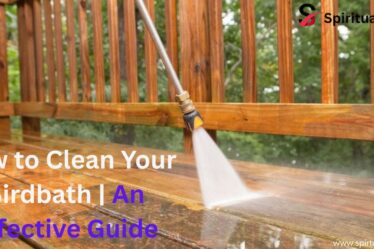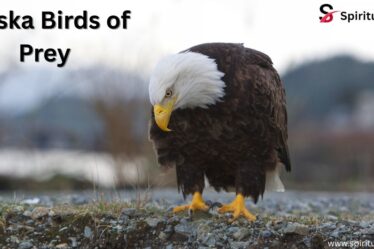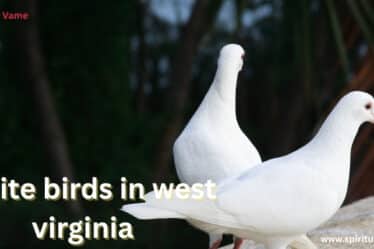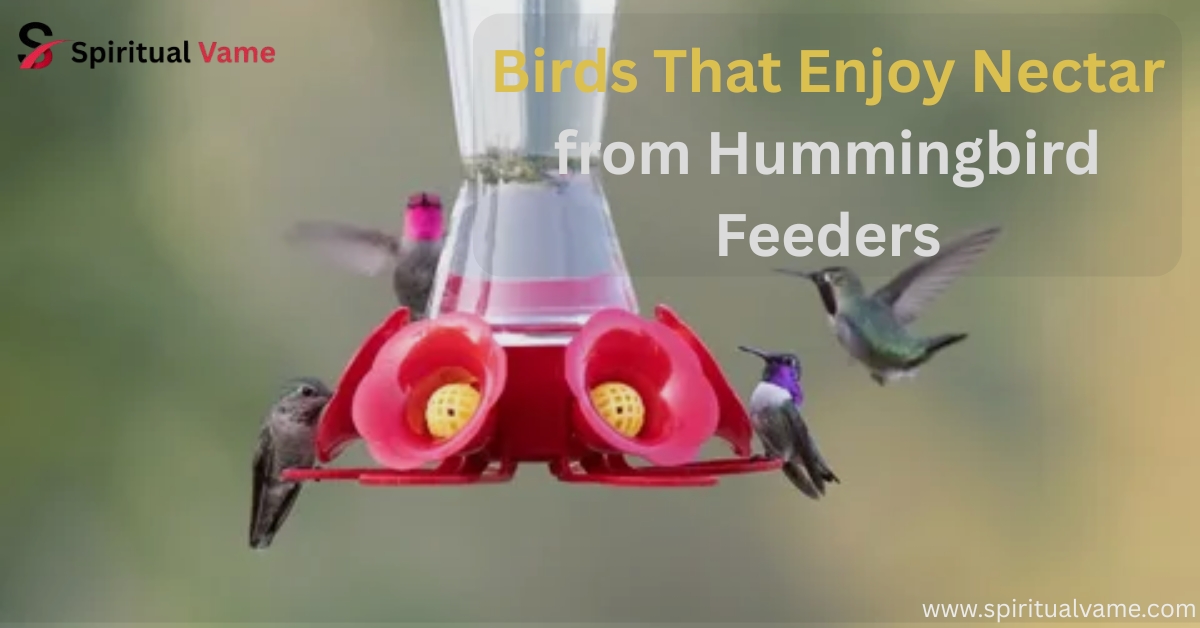
Many people love watching birds that drink nectar from hummingbird feeders. These birds are not only beautiful but also fascinating to observe as they hover and sip from the feeders. While hummingbirds are the most well-known nectar drinkers, other types of birds also enjoy the sweet liquid. Orioles, woodpeckers, and even warblers can be seen at feeders during migration or in spring and fall. If you’re curious about the different types of birds that drink nectar from hummingbird feeders, this article will introduce you to several unexpected visitors and share how to attract them to your garden. Enjoy the colorful and lively scene these birds bring!
10 Birds Visiting Your Hummingbird Feeders
As the weather warms up and flowers start to bloom, your hummingbird feeder might turn into a busy pit stop for more than just ruby-throated hummingbirds. These feeders attract a colorful mix of visitors during the spring migration. Some arrive from the tropics, others from southern states, all in search of food, water, and shelter. The following birds are some of the most frequent guests you’ll see joining hummingbirds at feeders across the U.S., often surprising backyard bird watchers.
One of the most common nectar lovers is the American yellow warbler. These bright songbirds can be found darting through tree branches but sometimes come down to investigate feeders, especially if there’s nectar nearby. Then there’s the house finch, a familiar face in suburban gardens. Known for their reddish heads and cheerful songs, they’re not shy about sipping sugar water—especially when it’s placed in feeders with plastic ports they can easily access. The cactus wren, more common in dry Southwestern states, has also been observed drinking from feeders, often balancing on edges to reach inside with surprising agility.
Equally vibrant is the western tanager, a yellow and red bird that’s hard to miss. These birds feed mainly on insects and fruit but will visit special feeders offering small bowls of nectar during spring. In more coastal or desert areas, you might spot the hooded oriole, an expert at clinging to feeder ports and even feeding from halved oranges or dishes filled with grape jelly. American goldfinches, while typically seed lovers, sometimes go for nectar, especially when competition around sunflower feeders gets too intense.
Another bright orange visitor is the Baltimore oriole. These orioles love sweet liquids and regularly visit hummingbird feeders when traditional oriole feeders aren’t around. Downy woodpeckers also make surprise visits. Although they’re better known for tapping on tree trunks, they’re clever enough to learn how to drink nectar when it’s available. The purple finch, with its berry-red hue, sometimes drinks from feeders too, especially during spring. Lastly, the Tennessee warbler, a small migratory bird, often takes quick sips while passing through, refueling for the journey ahead.
Attracting Hummingbirds and Orioles
The Audubon Society offers an excellent guide on how to make your backyard welcoming for hummingbirds and orioles. These birds are drawn to bright red flowers, so planting blooms like cardinal flower, bee balm, and trumpet vine can make a big difference. These tubular flowers naturally hold nectar, which is the perfect fuel for birds with high metabolic rates. But it’s not just about food. Birds need shelter, safe nesting places, and access to clean water to truly feel at home.
To further help these species thrive, Audubon recommends creating a complete habitat. That means using native plants, reducing pesticide use, and offering consistent food sources. For example, placing feeders filled with sugar water and grape jelly in shady spots can reduce feeder damage from the sun and make them more appealing. In states like Alabama, local stores such as Wild Birds Unlimited in Auburn offer helpful tips and supplies for building a bird-friendly yard. Following expert advice from organizations like Audubon and The National Wildlife Federation Blog can help you attract more species while also supporting their long-term survival.
Nectar Lovers
Not every bird drinks nectar, but for those that do, it’s a vital part of their diet. Hummingbirds are the most famous nectar sippers. Their fast wings and constant movement mean they burn through calories quickly, which makes sugar water the perfect high-energy food. But many other birds have caught on too. Orioles, sunbirds, and even some warblers rely on nectar during parts of the year when insects or fruit are scarce. These nectar lovers aren’t just freeloaders—they’ve developed ways to process sweet liquids efficiently.
Inside their bodies, a special enzyme called sucrase helps break down the sucrose in nectar. This allows them to get an almost instant dose of energy, which is especially helpful during migration or while raising young chicks. Even birds you might not expect—like chickadees or mockingbirds—have been seen feeding at nectar ports, sometimes competing fiercely for access. Nectar also gives birds an adaptive advantage, especially in regions where insects or fruit are seasonal or limited.

Creating a Hummingbird- and Oriole-Friendly Yard
If you want to see more birds at your hummingbird feeders, the best thing you can do is make your yard as bird-friendly as possible. Start by planting native flowers like bee balm, coral honeysuckle, and cardinal flower. These blooms produce more nectar than non-native varieties and bloom in different parts of the spring, summer, and fall seasons, giving birds a consistent food source. Make sure to add tubular flowers too—birds like tanagers, warblers, and orioles find them easy to feed from.
Beyond plants, think about the layout of your garden. Give birds places to rest by planting bushes or placing perches near feeders. Avoid crowding the space; birds don’t like feeling trapped or cornered. Set up feeders at different heights and locations to reduce competition between aggressive birds. And don’t forget about water—a small fountain or shallow bowl can attract birds that wouldn’t come just for food. With the right mix of plants, water, and feeder styles, your yard will become a hotspot for birdwatching.
Using Feeders
Using feeders properly is key to attracting nectar-drinking birds. The type of feeder matters—plastic feeders with narrow entrances work well for hummingbirds, while larger special feeders with small bowls or spikes might suit orioles and woodpeckers better. Keep your feeders clean and filled with fresh sugar water. Dirty feeders can cause feeder damage, lead to nectar spillage, and even make birds sick. To prevent issues with bees or ants, use nectar guards and avoid placing feeders too close to the ground.
Place feeders in isolated areas with plenty of shade. Sunlight can spoil nectar quickly, especially in hot climates. If your feeder has yellow plastic inserts, be mindful—they might attract more insects than birds. Rotate feeder locations every couple of weeks to encourage more bird diversity and help reduce aggressive behavior. And be patient. Once birds find a reliable food source, they’ll keep coming back, often bringing more along with them.
Nectar Plants For Northern Gardens
Gardeners in the Northern U.S. have great options for nectar-rich plants. Choose hardy flowers like bee balm, columbine, and red cardinal flower. These plants thrive in cooler climates and bloom in spring and summer, making them excellent nectar sources. Spacing them out across your garden ensures birds have constant access to food, even as some plants fade and others bloom.
You might also add native varieties of coral bells, lupine, or wild columbine for extra color and appeal. These flowers not only attract hummingbirds but also bring in warblers, finches, and even mockingbirds. Plant in clusters to mimic natural feeding zones and make your backyard more inviting.
Nectar Plants For Southern Gardens
In the South, where migration seasons are long and temperatures stay warmer, plants like coral honeysuckle, Mexican sunflower, and firebush are ideal. These species thrive in heat and continue producing nectar deep into the fall months. Their vibrant blooms and long tubes are perfect for nectar feeders like hummingbirds, orioles, and sunbirds.
Try mixing in salvia varieties and Turk’s cap for added diversity. These plants don’t just look beautiful—they give birds plenty of fuel for their high-speed lives. Plus, their long blooming seasons ensure that your feeders stay full of color and activity even as the weather changes.
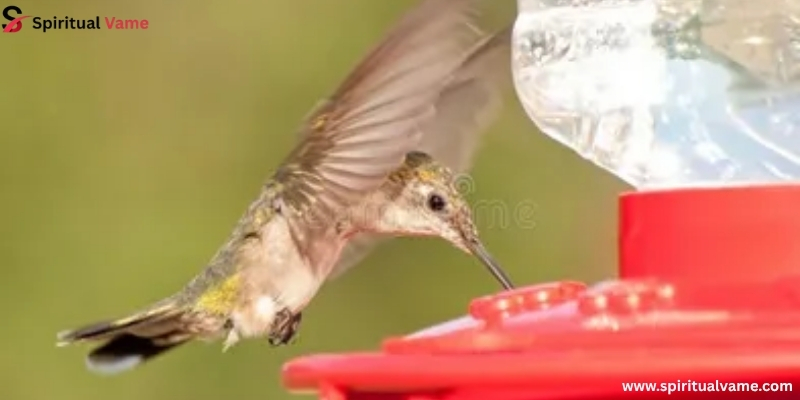
Beyond Hummingbirds- 4 Other Birds That Drink Nectar
Though hummingbirds are the stars of nectar feeders, several other birds make regular appearances. One of the most common is the Baltimore oriole, which prefers feeders filled with grape jelly, but won’t say no to a sip of sugar water. You’ll often see them hovering like hummingbirds or perching directly on feeder ports.
Red-bellied woodpeckers also enjoy sweet treats. These birds are smart and persistent, often returning to feeders they find easy to access. During spring, you might see the yellow-rumped warbler, a bird that usually sticks to insects, sneaking a drink of nectar between flights. And of course, the house finch, which is almost everywhere in the U.S., loves nectar when it’s available, especially if other food is scarce. According to the Birdserenity blog, these birds are all becoming more common visitors at feeders across the country.
Other Birds Visiting Hummingbird Feeders in Spring
When spring rolls around, a wide variety of birds begin their migration across the U.S., and many stop by backyard feeders for a much-needed snack. While hummingbirds remain the primary visitors, other species are showing up more often, especially at feeders filled with sugar water. These birds may not rely solely on nectar, but they’ve figured out how to take advantage of it. Their feeding behavior changes with the season, and springtime brings a mix of bold and unexpected guests to nectar feeders everywhere.
Downy woodpeckers, for example, aren’t usually associated with nectar, but they’ll visit feeder ports when other food sources are limited. These small, agile woodpeckers are smart enough to find nectar guards or perch on the edge of feeders to sip the sweet liquid inside. Orioles, both Baltimore and hooded, are common nectar thieves in spring—they’re bold, colorful, and often compete for feeder access. Goldfinches might show up, especially in early spring when insects and seeds are still scarce. They use feeders not just for food but also as rest stops during their migration journey.
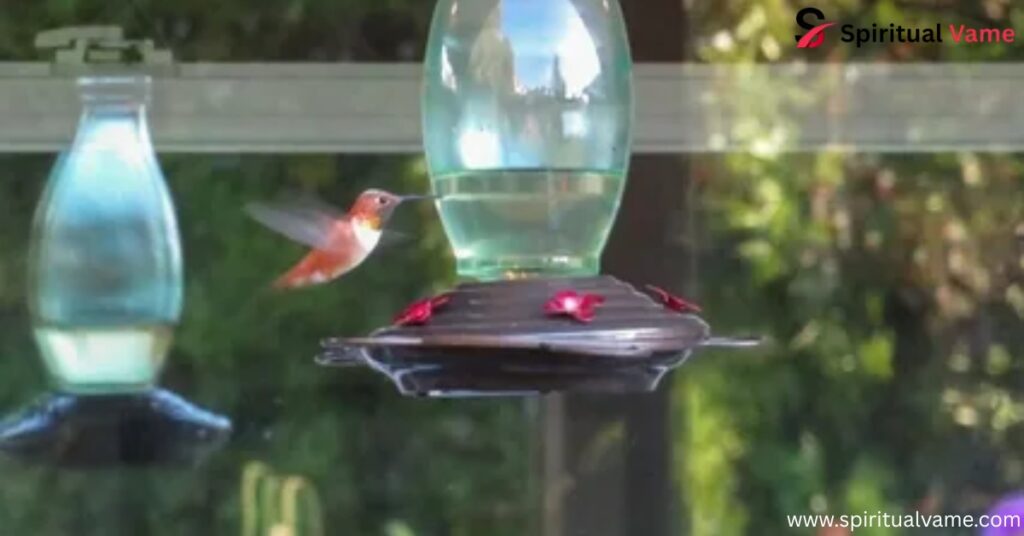
Warblers, especially Tennessee warblers, often take quick drinks from feeders as they travel. While they feed primarily on insects, they find nectar a useful backup when bugs are hard to find. Chickadees, small but curious, also show up unexpectedly at hummingbird feeders, balancing themselves on ports and getting a quick sip of energy. Each species behaves a little differently, and sometimes their visits can cause feeder damage or result in nectar spillage, especially if the feeder isn’t designed for their size or weight. That’s why feeder design, proper feeder placement, and maintenance matter when trying to attract a wide variety of bird diversity to your yard.
Conclusion
Attracting hummingbirds and orioles to your backyard is a rewarding experience, and it’s clear that these delightful creatures aren’t the only birds that drink nectar from hummingbird feeders. A variety of other birds that drink nectar from hummingbird feeders, from woodpeckers and goldfinches to warblers and chickadees, all find nectar-filled feeders a valuable stop during their migration or for an energy boost in the spring and fall. By carefully selecting the right nectar plants, using well-designed feeders, and creating a welcoming habitat, you can provide these birds that drink nectar from hummingbird feeders with much-needed resources as they continue their travels.

